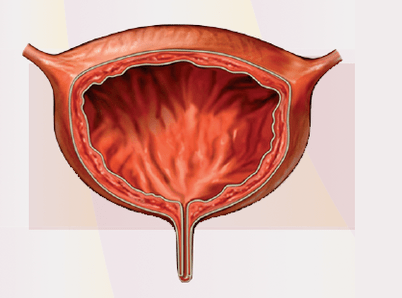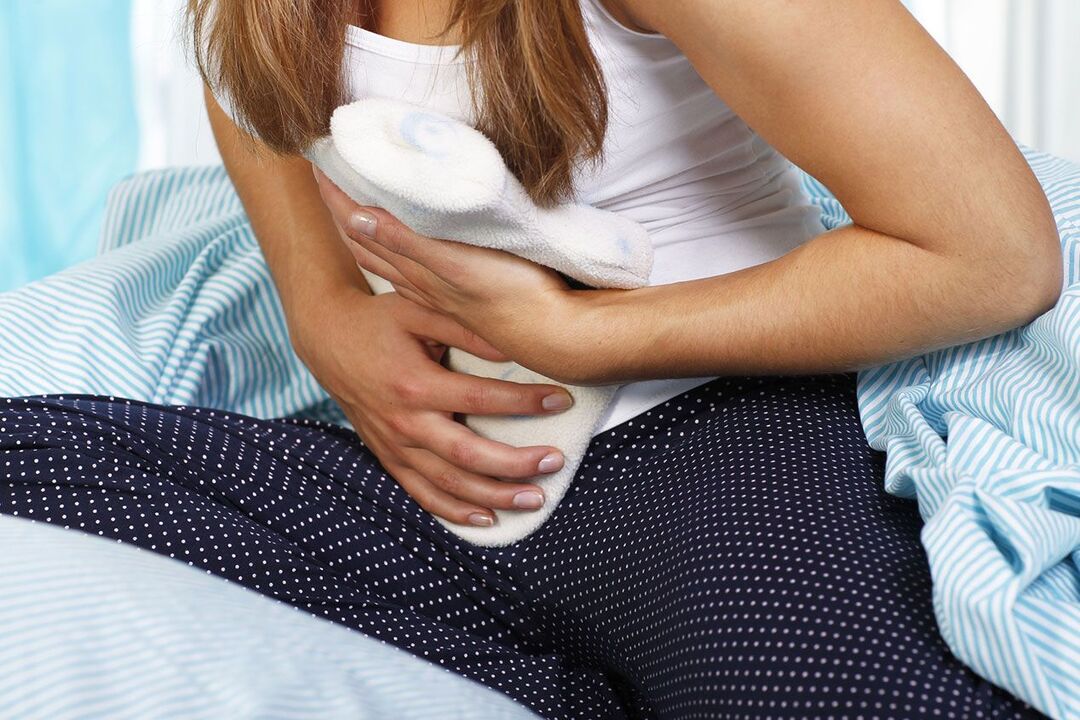Cystitis is inflammation of the walls of the bladder. It is characterized by fast (every 15 to 20 minutes), a sharp painful urination in small parts, sometimes with an admixture of blood, subfebril body temperature. The transition of the disease into a chronic form, the rise of the infection and the development of the inflammatory process in the kidneys and in reducing the urethra are possible. Urine analysis and the results of the ultrasound of the bladder helps the urologist with the diagnosis of cystitis. In order to determine the etiology of cystitis, the bacterial sowing of urine and smear from the urethra is carried out. Cystitis therapy primarily implies an effective effect of medicinal products on infectious means that they caused.
General information
Cystitis is an inflammation of the mucous membrane of the bladder. In most cases, cystitis has an infectious nature. The disease is widespread, representatives of the weak and stronger sex, but is more common in women due to some anatomical features of the structure of the female body.
Urethra for women (urethra) wider and shorter than male. It is therefore easier for pathogens to penetrate the bubble. This determines more frequent cystitis in women. In most cases, women of childbearing age are sick of cystitis. There are frequent cases in which a woman repeatedly develops bleeding and the quality of life worsens considerably.
As a rule, the cystitis is caused by representatives of conditionally pathogenic flora-an-darm stick, streptococci, staphylococci etc. Sometimes cystitis occurs due to infection with pathogens sexually transmitted diseases on mycoplasm and urea conflasm.

Symptoms of cystitis
The most characteristic symptom for bladder infection is painful urination, accompanied by remaining sensations of combustion and rubbing. In addition, patients with bladder inflammation are disturbed by pain in the lower abdomen and a feeling of incomplete emptying of the bladder. Sometimes urinary incontinence develops in cystitis that urinated with a strong wish.
Urine with bladder infection can become muddy due to contamination of the red blood cells or buy a reddish color. The temperature sometimes rises to 37, 5 degrees. The temperature increase in cystitis can signal the possible disease of the kidneys. In such cases, it is therefore urgent to apply for qualified medical care.
The prevalence of cystitis
Acute cystitis is one of the most common urological diseases. In most cases, an uncomplicated combination is created, in which microbes only influence the mucous membrane without influencing the submucosal layer. According to studies in the field of urology, acute cystitis drops from 26 to 36 million people every year. At the same time, the incidence rates in women are 500-700 episodes per 1000, whereas in men between the ages of 21 to 50, a similar indicator is only 6-8 cases per 1000.
Girls suffer from cystitis than boys three times more often. The disease is extremely rare for newborns and children under 1 year or more often in children aged 1-3 and 13-15. Most of the time, bladder infection occurs in children between the ages of 4 and 12.
Chronic cystitis is also part of the number of widespread urological diseases. According to studies, chronic bladder infection suffers from 11 to 21% of the population. A significant spread of the data is due to a different approach to determining chronic cystitis. Some studies in the studies are of the opinion that the diagnosis of chronic cystitis should be made if the frequency of exacerbations is twice a year or more, other exacerbations do not determine.
Cystitis in summer
It is unlikely that there is a woman who overshadows the pleasure of the warm summer days of such an unpleasant illness as flower inflammation. In the meantime there is many reasons for cystitis in summer, especially when a woman goes far away from home and falls into an unusual environment.
The most common causes of cystitis in the warm season:
- Accommodation at a new place during vacation, which leads to problems with hygiene rules;
- Settlement of the body that occurs in cold water due to a longer bathing;
- Violation of the usual urine regime related to a flight, a movement or a new place (under such conditions, a woman often has to endure for a long time and wait for a reasonable occasion);
- A sharp change in the climate that negatively affects immunity.
An additional risk factor for the development of cystitis is sometimes an increase in sexual activity against the background of the diseases that are unfavorable for the female body.
If your vacation overshadowed such an unpleasant illness as cystitis, you urgently need to contact a urologist. In order to clarify the diagnosis, an ultrasound of the bladder must be subjected and urine analysis must be carried out. Modern antibacterial medicines effectively influence cystitis, can accelerate recovery and prevent the transition from acute cystitis chronically.
In contrast to medication of earlier generations that influence the entire body, modern antibiotics used to treat cystitis selectively on inflamed tissue of the bladder, practical, without other organs and systems. The concentration of medicines only reaches the maximum values in the urine and the inflamed mucous membrane of the bladder. This can minimize the toxicological strain on the body in the treatment of cystitis and increase the effectiveness of drugs.
Phototoxicity is an unpleasant side effect caused by many medication to treat cystitis. It manifests itself in increased sensitivity to sunlight, the appearance of redness and also burns when they are exposed to ultraviolet rays of small intensity. Due to the presence of substances in medicinal products, it develops with the properties of photosensitors and photorative activists. Such substances lead to the occurrence of a large number of free radicals in the skin, which in turn causes the destruction of skin cells, inflammation and burns.
Cystitis during pregnancy
Cystitis can develop with any pregnancy. The likelihood of the development of cystitis increases due to the shift of internal organs that are depressed by an increasing uterus, to changes in the hormonal background and hemodynamics. The effects of these factors cause incomplete emptying of the bladder, and the remains of urine in the bladder serve as a favorable environment for the development of bacteria.
At the first sign of flower inflammation, a pregnant woman was supposed to do an extraordinary consultation of a gynecologist who carries out pregnancy and tells him about the symptoms that have occurred. If necessary, the doctor gives the patient a direction to the patient.
Children's cystitis
Cystitis can develop in a child of all ages. In the case of girls of the old and school age, however, the risk of illness increases 5 to 6 times. The main causes for the frequent development of cystitis in children of this group are a number of factors. The girls' ovaries have not yet started to produce estrogens, the barrier properties of the mucosal membranes low, and the width and short urethra enables pathogenic microorganisms to get into the bladder cavity.
The likelihood of the development of cystitis increases in other diseases due to a decrease in immunity and the formation of favorable conditions for the reproduction of pathogenic microbes in the urethra. The main method for preventing bladder inflammation in girls is to carefully adhere to the hygiene rules.

The causes of cystitis
In 70-95% of the patients suffering from acute cystitis, the cause of the disease becomes an Eatherball magic staff. Staphylococcus is found in 5 to 20% of the patients, and in the rest, Proe or adhesive acts as pathogen. Typically, aperture is caused by representatives of the conditional pathogenic flora. With the development of bladder inflammation due to instrumental or surgical interventions, gram -negative bacteria often become the cause of the disease. The studies confirm that the pathogens of cystitis can not only be bacteria, but also viruses, mycoplasms, trichomonas, chlamydia and various fungi.
The broad prevalence of cystitis in women is due to both the low length and to the width gap of the urethra, and their location compared to other organs. The urethra of women is in contrast to the man close to the anus. The anatomical features and the topography of the female body contribute to the penetration of pathogens into the urethra, their migration into the bladder and the development of cystitis.
Cystitis rarely develops in men. The reason for the occurrence of cystitis in men usually becomes inflammation of the urethra, the prostate, attachments of testicles and seed bubbles. Sometimes the infection of the urethra occurs due to the catheterization of the bladder in women and men.
The risk of cystitis increases during the catheterization of the bladder in men suffering from prostateadenoma, one of the symptoms of which a constant delay in urine is. The risk of developing cystitis also increases with the introduction of the catheter of a pregnant woman or recently gave birth to a woman, which is due to a decrease in the tone of the urinary tract.
Treatment of cystitis
The quick healing of bladder inflammation and the complete restoration of the mucosal membrane of the bladder are sufficient with the start of treatment and the use of drugs. It should be emphasized that the likelihood that cystitis will be completely eliminated with the timely diagnosis and the use of medicinal products that are demonstrated by the pathogens of the infection. Later, the beginning of treatment and the prescription of medicinal products that only remove the symptoms of cystitis without influencing the pathogenic environment can be chronic to the transition of acute cystitis.
The main task of the doctor who treats cystitis is the destruction of pathogenic microorganisms that caused the mucosa to penetrate and inflammation. The selection of drugs for antibacterial cystitis therapy is determined by parameters such as the duration of the disease and the severity of the symptoms. When choosing medicines, possible side effects, absorption of the drug, the method and rate of its excretion, the presence of simultaneous diseases, etc. are taken into account.
The effectiveness of the drug in the treatment of cystitis is determined by the ability of this drug to influence certain microorganisms. It should be remembered that pathogenic bacteria adapt and become insensitive to antibiotics. Over time, the main cause of cystitis (E. coli) has become resistant to these medication. In addition, drugs for the treatment of cystitis, which referred to the previous generation of antibiotics, had a fairly high degree of toxicity and caused various side effects.
When choosing a drug for the treatment of cystitis, the treatment costs should also be taken into account, which is not only determined by the costs of a tablet, but also by the actual effectiveness of the antibiotic, the duration of the intake and the possible risk of the patient's health. Today, medication for the treatment of cystitis are available that selectively influence pathogens. Once in the body, the drug concentrates in the bladder, which means that they can increase its effectiveness. In addition, the use of the latest generation antibiotics ensures a reduction in treatment with cystitis, reduces the likelihood of side effects and reduces the risk of the patient's body.
When treating cystitis, fat and spicy foods should be excluded from diet, increase fluid intake and avoid hypothermia. A warm heating pillow on the lower abdomen helps with cystitis. Complex treatment of cystitis when using ionoporesis, UHF or inductothermia is possible. We must not forget that certain gynecological diseases are contraindicated in the presence.
Useful tips for preventing cystitis:
- Try to avoid hypothermia.
- Follow the rules of personal hygiene despite the circumstances.
- Use neutral savings for hygienic methods.
- During menstruation, change the hygienic seals in good time.
- Empty the bladder in time.
- Increase fluid intake.
- Excessive tight clothing can worsen the blood circulation in the pelvic area so that it is better to reject such clothing.
- Try to normalize the work of the intestine. With the tendency towards constipation, the proportion of fresh fruit and vegetables in the diet should be increased.


























